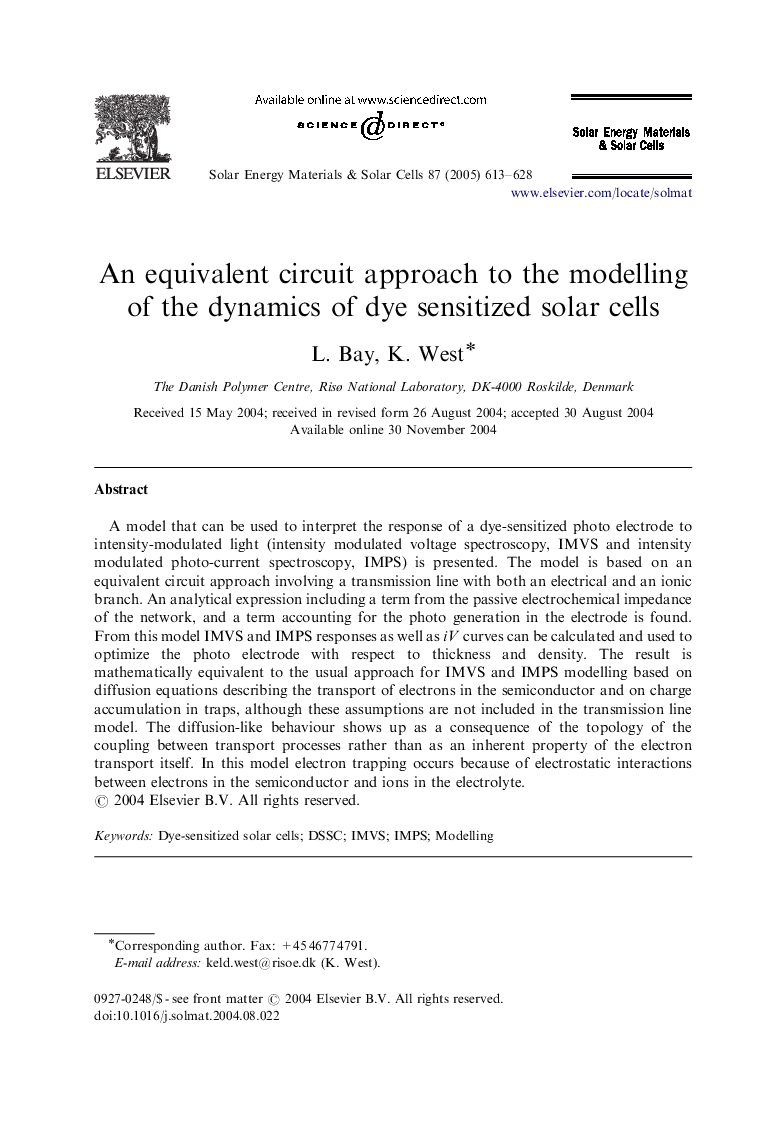| Article ID | Journal | Published Year | Pages | File Type |
|---|---|---|---|---|
| 9618706 | Solar Energy Materials and Solar Cells | 2005 | 16 Pages |
Abstract
A model that can be used to interpret the response of a dye-sensitized photo electrode to intensity-modulated light (intensity modulated voltage spectroscopy, IMVS and intensity modulated photo-current spectroscopy, IMPS) is presented. The model is based on an equivalent circuit approach involving a transmission line with both an electrical and an ionic branch. An analytical expression including a term from the passive electrochemical impedance of the network, and a term accounting for the photo generation in the electrode is found. From this model IMVS and IMPS responses as well as iV curves can be calculated and used to optimize the photo electrode with respect to thickness and density. The result is mathematically equivalent to the usual approach for IMVS and IMPS modelling based on diffusion equations describing the transport of electrons in the semiconductor and on charge accumulation in traps, although these assumptions are not included in the transmission line model. The diffusion-like behaviour shows up as a consequence of the topology of the coupling between transport processes rather than as an inherent property of the electron transport itself. In this model electron trapping occurs because of electrostatic interactions between electrons in the semiconductor and ions in the electrolyte.
Related Topics
Physical Sciences and Engineering
Chemical Engineering
Catalysis
Authors
L. Bay, K. West,
